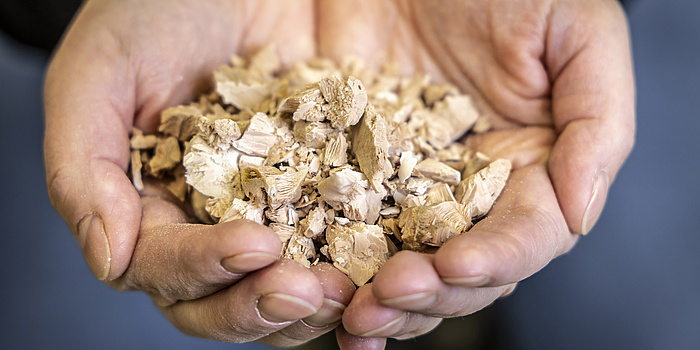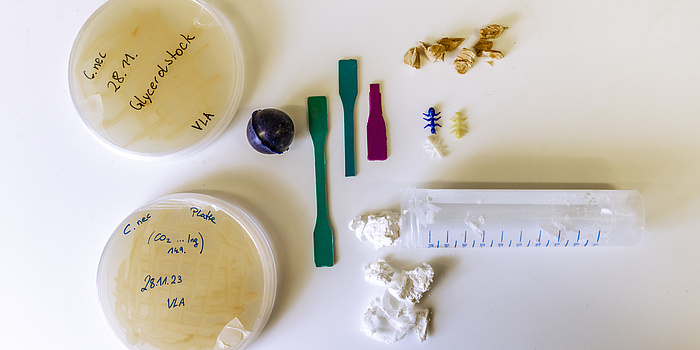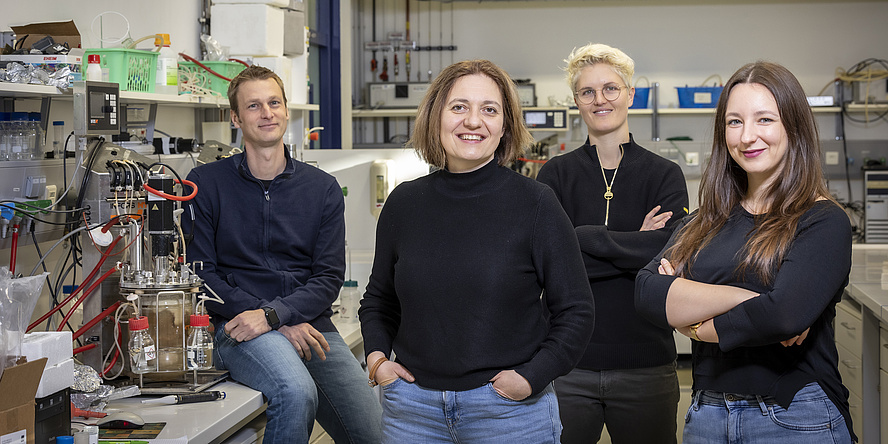There are several marbles in shades of black, grey and violet in front of biotechnologists Regina Kratzer and Vera Lambauer. As well as little ants in shades of blue. All these illustrative materials are made from a special bioplastic that researchers at TU Graz are working on. Bacteria are fed with a mixture of H2, O2 and CO2 and produce a biopolymer as a metabolic product. At the end of the gas fermentation process, the cells consist of 80% bioplastic. “Our bacteria are classic Cupravidus necator strains that other research groups are also working with. We at the Institute of Biotechnology and Biochemical Engineering in co-operation with the Institute of Thermal Engineering (where the plant/bioreactor is housed) are trying to establish gas fermentation as a new technology. Incidentally, in human metabolism, fat would be the by-product of the metabolism that produces the biopolymer in bacteria,” explains Regina Kratzer.

The plastic is isolated from the resulting biomass in the laboratory and processed further. Carina Frank from the Institute of Chemistry and Technology of Materials, for example, is working on a rubber-like material, testing different compositions and subjecting test strips to mechanical tests. “Our material feels like conventional plastic, but is slightly more brittle,” she explains. “The trick is to make it so flexible that it is easy to use, but still remains easily and quickly biodegradable.” The plastic itself has a lifetime of around 200 years under normal environmental conditions, but can be broken down by microorganisms in a suitable environment in a short time. The plastic from gas fermentation is therefore sustainable, bio-based and biodegradable. Long-lasting microplastics are not produced during degradation as the degradation rate of bioplastics is greatly increased with small particles.
At the same time, the laboratory is working on the efficiency of gas fermentation and on a safe, easily controllable bioreactor as a “home” for the bacteria. “We feed the bacteria with a precise mixture of different gases. And that is a rather explosive matter: we have to mix H2 with CO2 and O2 here. Good process control is therefore incredibly important,” explains Kratzer. The Institute of Automation and Control is responsible for this. “The larger the plant, the more difficult it is to ensure a uniform concentration of gases in the direct vicinity of the bacteria,” explains Markus Reichhartinger, who works on process control.

Organic products from bacterial cultivation
The aim behind the research activities is to obtain a plastic made from CO2 (and other biological raw materials) with similar properties to plastics made from fossil raw materials. At the same time, it should be easily and quickly degradable in biogas or composting plants. “Different products can then be made from this. Plastic bags for supermarkets, for example. Or mulch films that should decompose in the soil after a year. They could also be implants for the human body that have a temporary support function but are also intended to be broken down in the body afterwards,” says Kratzer, explaining her future plans. The researchers are also thinking in terms of car tyres or shoe soles – in other words, all those areas where there is heavy abrasion of substances that are harmful to the environment and health. Bioplastics could also be used in cosmetics.
At the Institute of Molecular Biotechnology, the bacteria are genetically modified to give the bioplastic beneficial properties. Research is also being carried out into modifying the bacteria so that they can produce biofuels or proteins from CO2, for example to produce high-quality animal feed.

